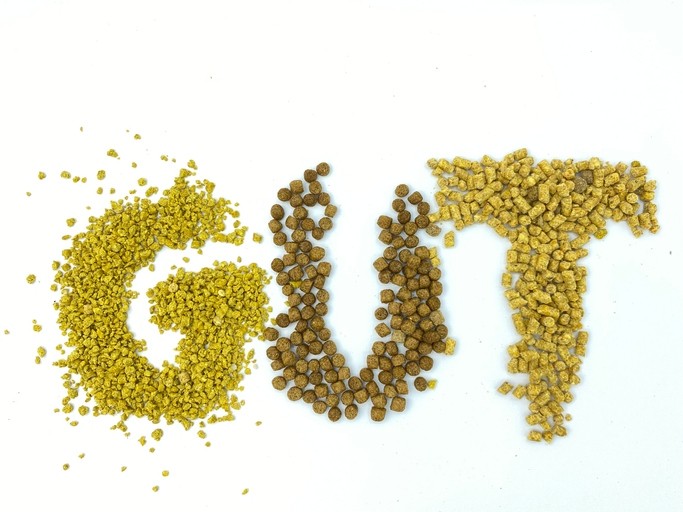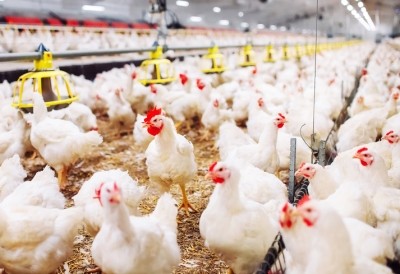Steering the microbiome for improved poultry gut health

Research also continues into the roles different fiber fractions may have on intestinal health in poultry and such insights may provide additional tools for steering the microbiome, according to the review by well-known animal nutrition experts from Ghent University in Belgium, namely Richard Ducatelle, Evy Goossens, Venessa Eeckhaut and Filip Van Immerseel.
Their paper shows that poultry researchers are digging deeper into the numerous complex and subtle interactions between the host mucosa, the intestinal content and all organisms residing in the intestinal tract of birds.
One of the authors of the paper, Prof. Richard Ducatelle, gave us a deeper dive:
"Firstly, all the challenges faced by the industry as regards poultry gut health are increasing rather than decreasing. Secondly, however, the progress that has been made in the scientific world on this topic in recent years in tremendous. Feed formulators, however, seem to struggle to put the new discoveries into practice. One serious challenge is the lack of reliable methods to analyze the non-digestible fraction (essentially the NSP fraction) of feed.
"The fundamental gaps the industry is struggling with in relation to poultry gut health is the following: There is a wealth of new compounds on the market as feed additives claiming protection of intestinal health, but, for many of them, the mode of action is insufficiently explained, and there is an inherent risk that combinations of different feed additives may not yield the anticipated favorable outcome. Also the relation between the ingredients and the additives need to be taken into account.
"There are no true barriers to plug these knowledge gaps but I am convinced that further dissemination of the newly acquired scientific knowledge to feed formulators and veterinarians is needed, hence the publication of this paper as a further step in this direction."
He said his and colleagues current research focus in relation to poultry nutrition is on the effects of different types of NSP (arabinoxylans, mannans, etc) on intestinal and on biomarkers for intestinal health that can be used in real time on farms.
Microbe-host interactions
They highlight the potenial offered by the gut health modulation signals of microbial metabolites.
While there has been a lot of focus on the impact of any changes in feed formulation or feed processing on bird gut health, the authors highlight that the signaling ability of the microbial kingdom, which can be sensed by the animal kingdom, and which exerts a myriad of effects on intestinal health, is starting to be investigated.
“When taking into consideration that intestinal microbiota in vertebrates have been shaped by millions of years of coevolution, it is not surprising that the microbe–microbe interactions and microbe-host interactions in the intestinal ecosystem are extremely complex and only a small fraction of it has been discovered and investigated so far. Nevertheless, these interactions have a determining role not only in gut health but also in the health of animals and humans in general.”
The team points out that intestinal commensal microbes are immune modulators, and much more.
“The interaction with the host can be direct, as in the case of bacteria attaching to the epithelium or being taken up by antigen presenting cells. The interaction can also be indirect, through ‘interkingdom’ signals. These signals are mostly metabolites produced by the bacteria and sensed by the host. Many of these signals are sensed through epithelial G-protein coupled receptors (GPR). In humans and laboratory animals, an increasing number of these GPR and their ligands have been identified.”
The GPR family and their ligands of bacterial origin have an important part to play in gut health, including that of poultry.
Butyrate, they said, is one of the most important end metabolites of the lower intestinal microbial metabolic network, and it is considered an ‘interkingdom’ signaling molecule. "It exerts a myriad of effects not only on intestinal health but also on general health."
Lactate is an important intermediate metabolite in the intestinal microbial network. Lactobacilli, which produce lactate on a substrate of xylooligosaccharide prebiotics, cross feed to members of the Lachnospiraceae family which can consume the lactate to produce butyrate in broilers (De Maesschalck et al., 2015), thereby generating an intestinal health promoting effect, said the team.
Lactate is, however, a double-edged sword. It is produced by many different bacterial species, but the ability to utilize lactate as a nutrient source seems to be restricted to a limited number of the anaerobic lower intestinal bacterial species, thus holding the risk of lactate accumulation (Sheridan et al., 2022), warned the scientists. They said the harmful, pro-inflammatory effects of excessive microbial lactate formation have to date remained unexplored in poultry.
Commensal gut bacteria also produce considerable amounts of metabolites which, in the host, are important neurotransmitters, but the role of microbiota-derived neurotransmitters in poultry intestinal health is also still largely unexplored, they noted.
Enzymes, prebiotics, probiotics, synbiotics and postbiotics
In recent years numerous attempts have been made to modulate the intestinal microbiome through nutritional or management interventions with the aim to improve intestinal health in poultry, according to Ducatelle and his colleagues.
Enzymes, prebiotics, probiotics, synbiotics and postbiotics all have been used in many different studies with the aim to support eubiosis and avoid dysbiosis in poultry, they remarked.
“Such feed additives have documented effects on the gut microbiota, but it is not always absolutely clear whether the changes in intestinal microbiota are responsible for the observed beneficial effects on intestinal health.”
Some fundamental underlying microbiota-mediated mechanisms are well documented, including those mediated by non-starch polysaccharides (NSP-fiber, mostly from plant cell walls) and protein utilization by the microbiota, commented the authors.
Undigested nutrients
The review examines the current state of knowledge regarding the possible impact of feed formulation on the intestinal ecosystem.
“Intestinal health is critically important for the digestion and absorption of nutrients and thus is a key factor in determining performance. Intestinal health issues are very common in high performing poultry lines due to the high feed intake, which puts pressure on the physiology of the digestive system.
“Excess nutrients which are not digested and absorbed in the small intestine may trigger dysbiosis, i.e., a shift in the microbiota composition in the intestinal tract. Dysbiosis as well as other stressors elicit an inflammatory response and loss of integrity of the tight junctions between the epithelial cells, leading to gut leakage.”
The microbiota residing in different sections of the GI tract are strongly influenced by the flow of undigested feed components, they commented.
“In high performing broilers, feed protein utilization in the small intestine is incomplete. On average 84g/kg crude protein ends up in the feces when broilers are fed ad libitum according to Kim et al., 2022a.
“Heat stress further reduces protein retention in broilers (Habashy et al., 2017).”
Residual protein that is fermented by putrefactive bacteria in the caeca results in the formation of compounds which, in excessive amounts, are toxic and pro-inflammatory, such as phenols, cresol, ammonia, amines and indoles (Apajalahti and Vienola, 2016), reported the team.
Modifying feed formulations for optimal digestion of protein may help prevent dysbiosis and support intestinal health in birds, stressed the scientists.
Beneficial effects of fiber
Depending on the ingredient composition - wheat-based versus corn-based diets - different amounts and types of NSP are delivered to different segments of the GI tract (Kim et al., 2022b), said the reviewers.
“These NSP constitute the main substrate for the intestinal microbiota in the ileum and caeca. The insoluble fraction of NSP has especially been shown to exert beneficial effects on intestinal health through enhancing microbiota activity in the hind gut (Kheravii et al., 2018).”
These beneficial effects of fiber depend to some extent on the physical form and the size of the particles, and interactions between particle size and fiber have been reported (Kheravii et al., 2017) and the fiber source also plays a role – certain NSP fractions will have different impacts, they continued.
“The arabinoxylan fraction, which is the dominant fiber fraction in wheat, may be either indirectly (following initial degradation by members of the Bacteroidetes phylum) or directly used by members of the Ruminococcaceae family to generate butyrate.
“In feed, xylanase supplements can support expansion of Faecalibacterium, one of the most important genera in this family (Ravn et al., 2017). The cellulose fraction of NSP has documented beneficial effects on intestinal health and performance through succinate production by Alistipes spp.”
The authors concluded that in current poultry gut health research the focus tends to be on nutritional steering of the intestinal microbiome towards expansion of beneficial genera and species with the objective of avoiding dysbiosis and excessive gut inflammation or gut leakage in high performing commercial breeds.
“The next step is nutritional steering of the microbial metabolome towards production of beneficial ‘interkingdom’ signals. Already, a range of different nutritional tools are available to steer the microbiome towards enhanced endogenous microbial butyrate production in the caeca of poultry. Further efforts in this direction are to be expected.”
Source: Animal Nutrition
Title: Poultry gut health and beyond
Authors: R Ducatelle, E Goossens, V Eeckhaut and F Van Immerseel















